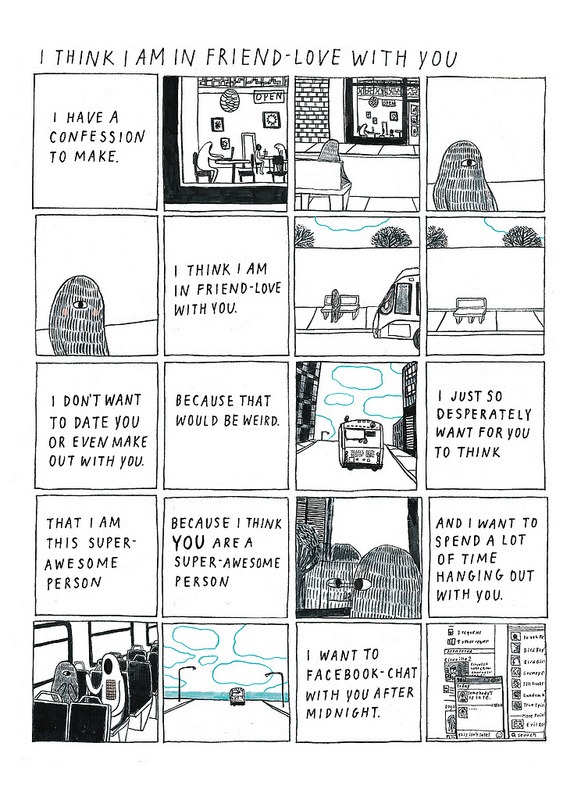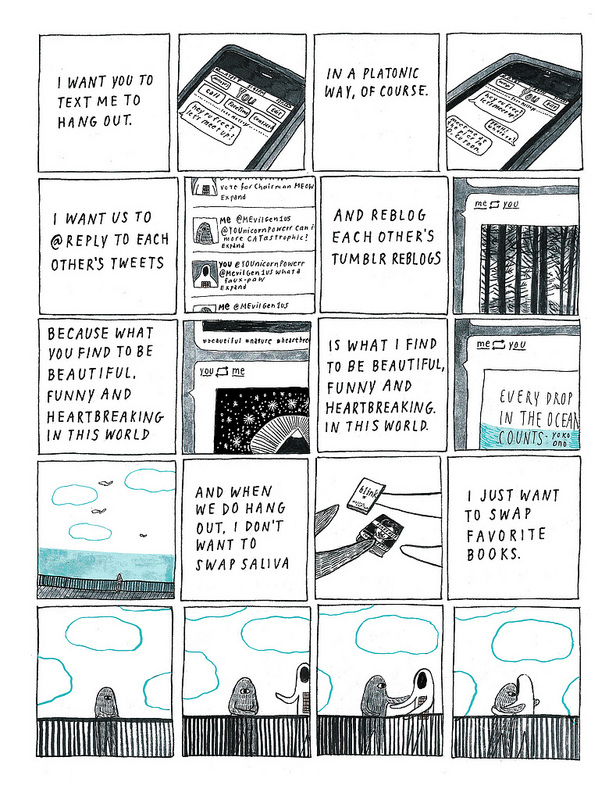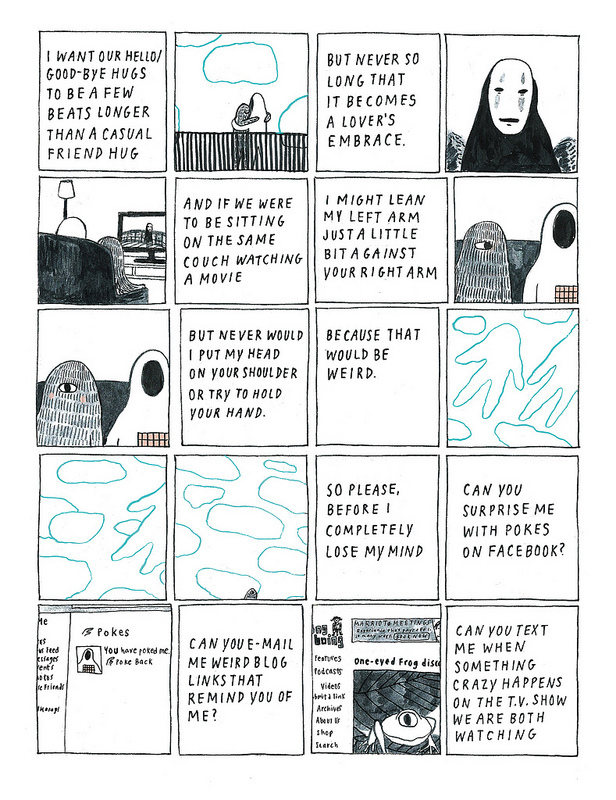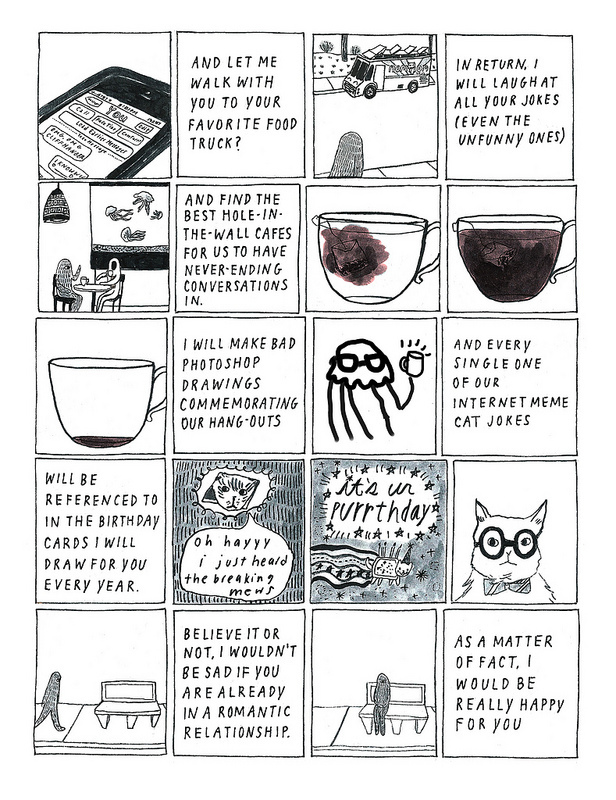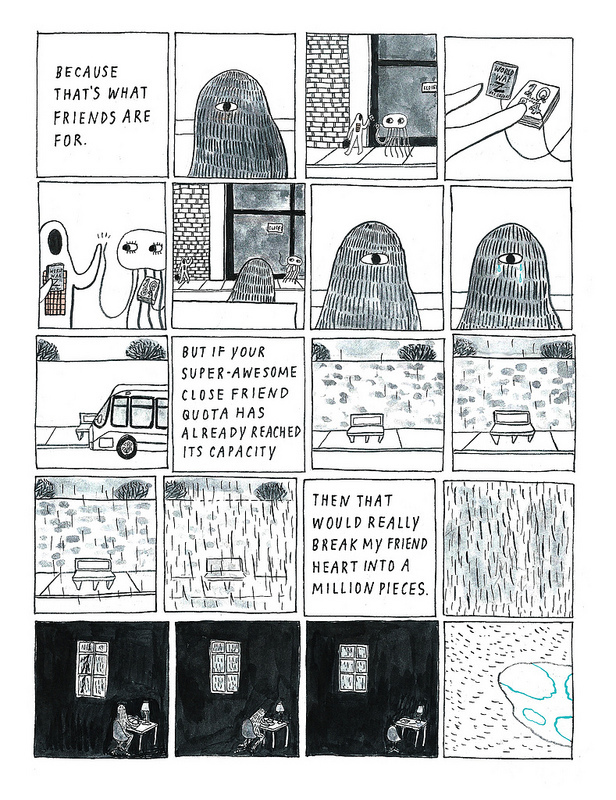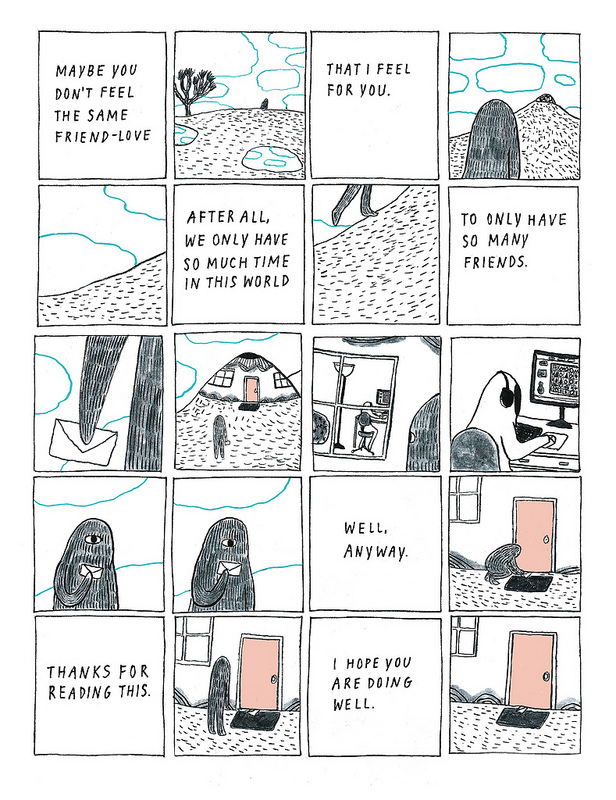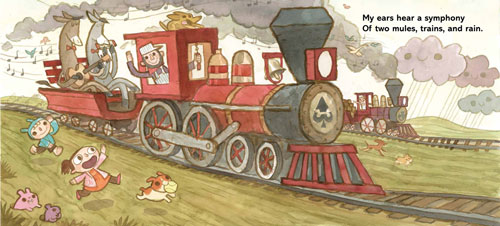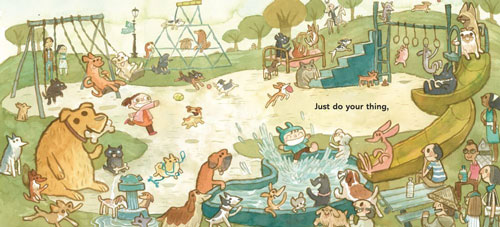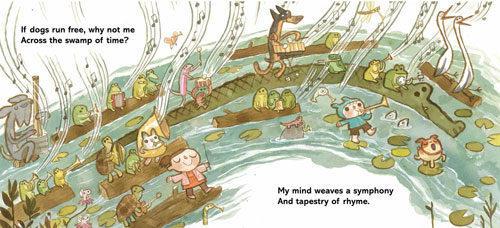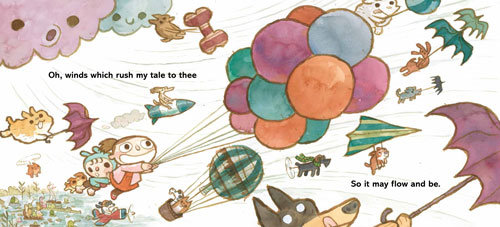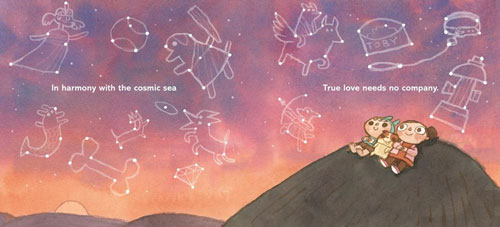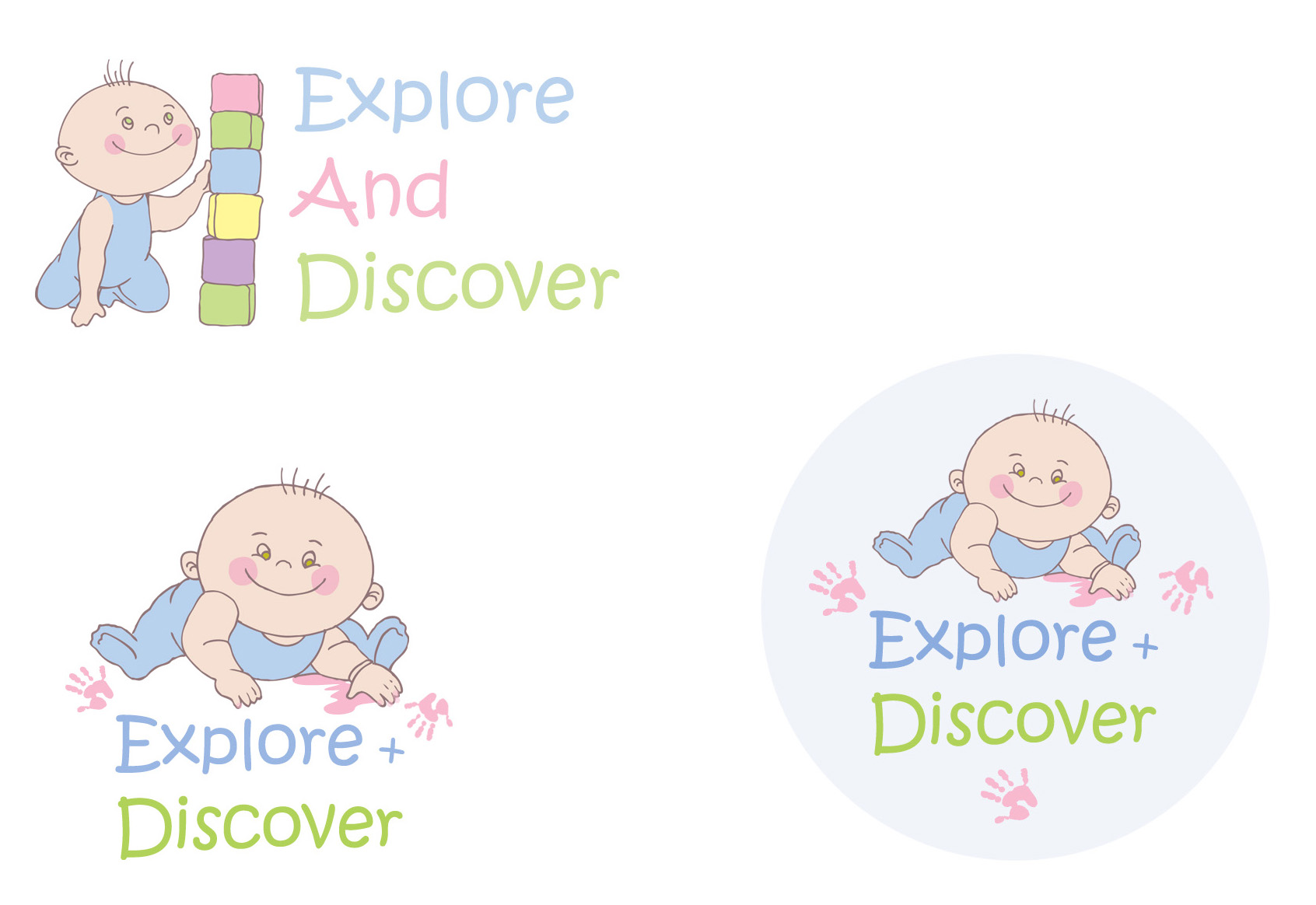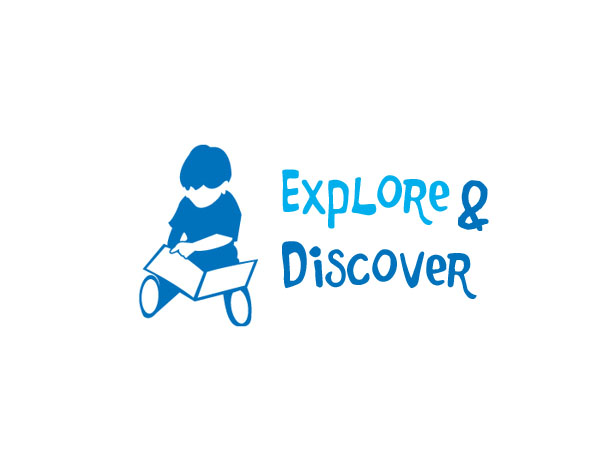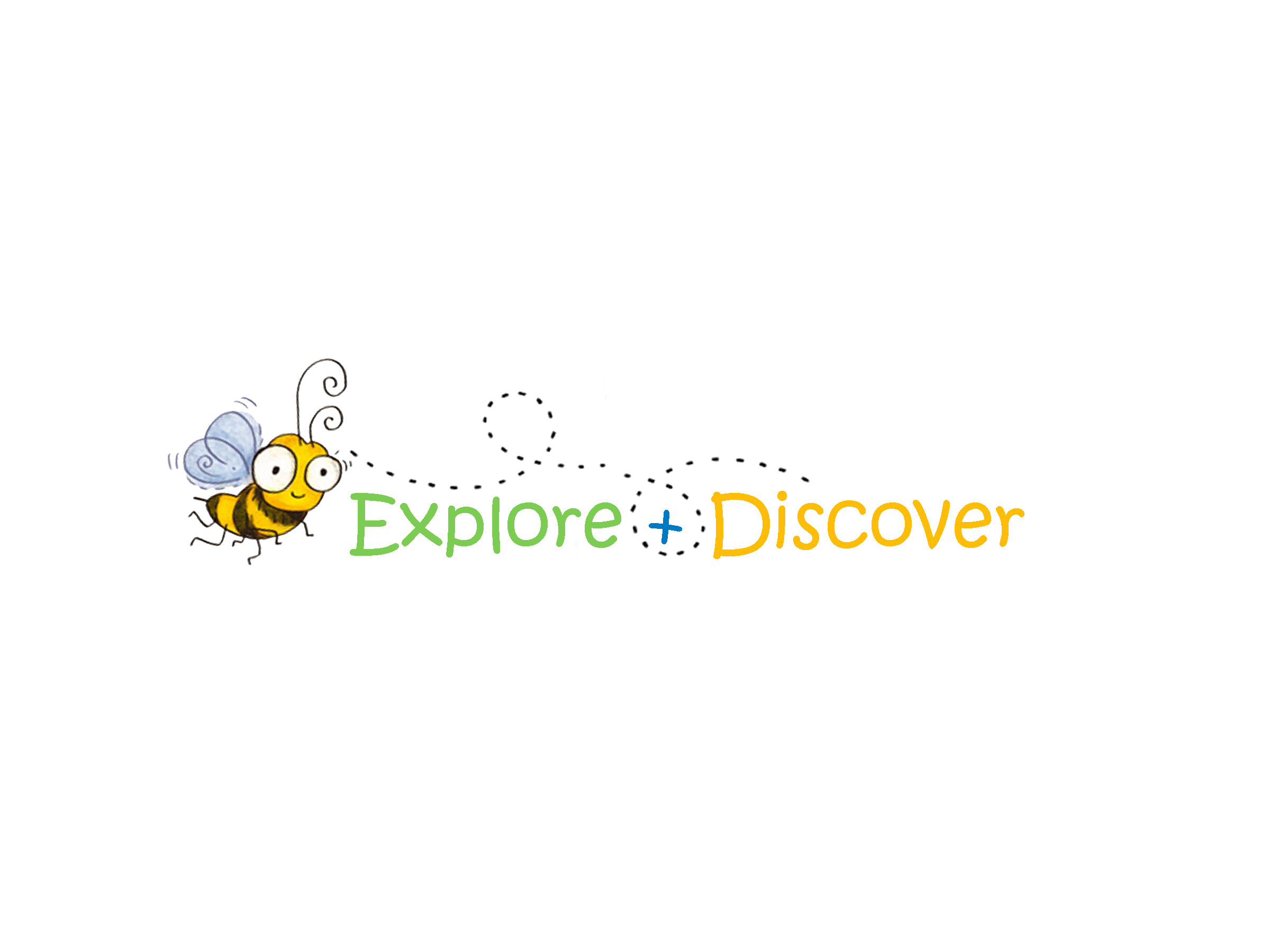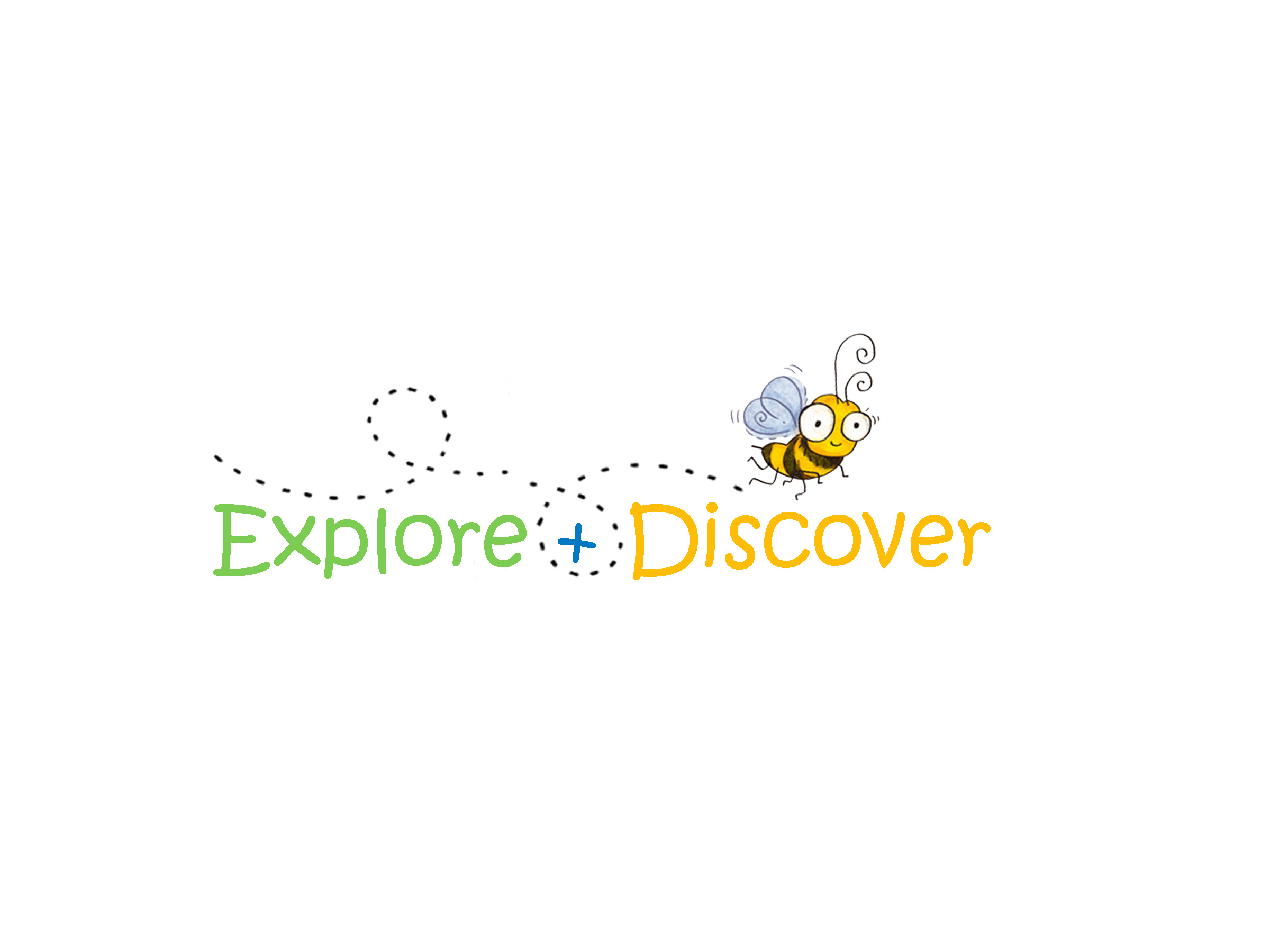The objects and buildings that people before us have made or used, hold a story and style unique to them. Old buildings fascinate me because they are all that is left when people pass away. When the buildings then are gone, it is like the memory and mark and all the hard work of the people who lived, played and worked there is gone forever as well.
Richard Brautigan
"Reduce intellectual and emotional noise until you arrive at the silence of yourself, and listen to it." -- Richard Brautigan
Happy Thanksgivukkah!
I THINK I AM IN FRIEND-LOVE WITH YOU
Source: THE RUMBLR
CREATIVITY
To be creative, one must obtain original ideas that have value. By making a distinction between originality and value, it is suggested that original ideas may sometimes have no value at all. Value, then, is something distinct from originality. Originality cannot be intrinsically valuable, presumably because it can just as easily be the ‘origin’ of arbitrary, destructive or pointless outcomes as it can of meaningful or useful ones. Accordingly, if originality is to be thought noteworthy it must first be qualified by other terms that designate its value: its “impact”, “significance”, “rigour” etc – terms, by the way, that also form the criteria of the Research Excellence Framework.
But where does this leave originality of indeterminate value? Are we always in a position to judge the value of something original? Do we even recognize things as original when we first encounter them? Furthermore, is it not one of the defining features of originality that it frequently appears unfamiliar and is therefore easily misunderstood or rejected? And what of the relationship between originality and tradition? Does tradition stifle or enable originality and is originality somehow preferable to traditions which have engaged, entertained and instructed people for generations?
The contemporary idea of originality is actually a relatively recent invention. Shakespeare, for instance, was not thought original in his time nor is it likely that he would have considered himself original. Originality, as we think of it today, developed hand in hand with the notion of genius: the belief that rare creative individuals are uniquely able to produce works without precedent, works that show no clearly discernible link with the past and which, therefore, must be the product of otherwise unaccountable gifts.
In antiquity it wasn’t believed that creativity had its ‘origins’ in individuals at all. Creativity and inspiration were thought to be unique gifts bestowed by the gods upon artisans who thus became earthly conduits for the gods’ creative impulses. This idea of the centrality of divine agency also permeated Christian art which was universally believed to be a representation of the word of god. It wasn’t until the rise of the Romantic movement in the 18th Century that the ideas of originality and genius emerged in their currently recognizable form, often fueled by ignorance of the sources drawn upon, copied and reworked by such “geniuses” as Shakespeare. In fact, very little is known even now about Shakespeare’s life or education.
As another oft claimed genius supposedly wrote: “Originality is the art of concealing your sources.” Interestingly, this quote is frequently mistakenly attributed to Einstein. In fact it was coined by Benjamin Franklin who, as is well documented, worked extremely hard, from unexceptional beginnings, to develop his prodigious and wide ranging skills. Equally interesting is the fact that Franklin is often dubbed a polymath but rarely a genius. Genius evidently takes more than simply concealing your sources – it takes concealing all your hard graft too.
In her essay “The Originality of the Avant-Garde and Other Modernist Myths” Rosalind Krauss discusses the Modernist obsession with pictorial grids which she contends is a “stereotype that is constantly being paradoxically rediscovered”. For Krauss: “The actual practice of vanguard art tends to reveal that 'originality' is a working assumption that itself emerges from a ground of repetition and recurrence.” Originality for Krauss is a kind of tradition, one that repeatedly proclaims it’s uniqueness and that constantly calls upon the same anti-referential and historical forms as exemplified by the grid. Krauss’ thoughts highlight a longstanding tension between tradition and originality. Whereas originality demands the new, the unexpected, the novel and the unprecedented and calls for radicalism, individuation and autonomy, tradition, on the other hand, demands exactitude, respect for authority and the preservation and perpetuation of customs and the hard-earned skills of refined observation and craftsmanship.
But when making such comparisons we must be careful not to dismiss the lesser party as an unnecessary and outmoded anachronism. In his 1919 essay “Tradition and the Individual Talent” T. S. Eliot makes the vital point that great art is only ever born of a thorough understanding and awareness of the traditions of which the artist’s work forms a part. In his discussion of the work of poets and poetry - and art in general - Eliot rejects the commonplace assumption that an artist’s greatness is due to originality and instead asserts that:
"The most individual parts of his work may be those in which the dead poets, his ancestors, assert their immortality most vigorously. […] No poet, no artist of any art, has his complete meaning alone. His significance, his appreciation is the appreciation of his relation to the dead poets and artists."
Nevertheless, Eliot also warns against mindless adherence to tradition:
"Yet if the only form of tradition, of handing down, consisted in following the ways of the immediate generation before us in a blind or timid adherence to its successes, 'tradition' should positively be discouraged. We have seen many such simple currents soon lost in the sand; and novelty is better than repetition. Tradition is a matter of much wider significance. It cannot be inherited, and if you want it you must obtain it by great labour. " - TS Elliot.
You don’t have to look far to find that tradition is all but despised in contemporary academia. Academia conceives of itself as a progressive and forward thinking set of institutions and as such it is deeply committed to what Krauss terms “the discourse of originality”, that celebrates progress and improvement and is consequently opposed or at least indifferent to much that underpins and sustains tradition. Evidence for this disdain for tradition is clearly visible in a quarter century of decline and disappearance of those disciplines most devoted to traditional practices - the crafts in particular but also in the increasing threat to the arts and humanities in general.
And the culprit? The culprit is by no means originality itself but rather the centrality originality plays within the sciences. Science has no truck with tradition save for its core ‘methods’ of systematic observation, measurement, experiment, and the formulation, testing, and modification of hypotheses: of the Scientific Method itself. Everything expendable in science is dispensed with or, at best, left for historians to pick over and preserve.
But in the headlong quest for originality, that infects domains far beyond the realms of science, much is being sacrificed and not all that is abandoned along the wayside is either expendable or retrievable.
WHAT IS BRANDING?
Enjoy ...
This video was produced in 2011 by the MSc Brand Leadership team at Norwich Business School, University of East Anglia. The course was the first of its kind in the world and has attracted students from 23 countries including Japan, USA, Singapore, Taiwan, UK, India and China - to name but a few.
Serendipity, Success, and the Whimsy of Design: Beyond Pretty Pictures
“If you have something of interest to say, it’s OK to make people work for it … It makes them feel triumphant when they succeed.”
In 2010, graphic artist and designer Marian Bantjes, fairy godmother of exquisite typographic magic gave us the glorious I Wonder. Now, Bantjes is back with Pretty Pictures, a monumental six-pound monograph that is, of course, far more than what the irreverently literal title suggests, inviting us into a life’s-work wonderland of enchantment, beauty, thoughtfulness, opinionation, and imaginative defiance of convention.
Reflecting on her signature style of bridging the refined elegance of the past with the exponentially evolving self-invention of the present, Bantjes, feisty as ever and capable of deploying the word “splorp” with such infinitely delightful precision, considers her own journey amidst a culture of oppressive and unimaginative fads:
I first became known for my interest in ornament and, if you will, fancy curves and elegant lines married to contemporary shapes: pixels and squares and geometric forms. I have never tried to recreate the past: the past was already done well. But I wanted to resurrect motifs that had been abandoned by modernism and the pseudo-modernist culture of contemporary design, without being nostalgic. I was at the beginning of a movement that rose like a wave and quickly crashed over us in a splorp of thoughtless ornamentation. In a way, ornamentation was undone in the 21st century by the same mechanization that undid it in the 19th. The Victorian era was known for the proliferation of a morass of printed ornament parts that were used and combined willy-nilly and to excess by mass-production printers. The neo-decorative movement of the past decade was similarly glutted by a laying-on of clipart curves, sprayed flowers and the vomit of organic shapes that poured out of digital paintbrushes. For the few of us who were genuinely interested in exploring the marriage of old and new, and in resurrecting and perfecting a purity of form, it was already too late. Curves and swirls are over, man. They were trampled in the digital, faddish stampede without so much as a glance towards quality or invention. Very few people seem to have an eye for a good curve, fewer still the ability to make one. Despite the genuine pleasure I still get in creating the loop-de-loop, I blocked off the arabesques quite soon — my interests were broader and more complex.
Known for her intricate designs of deliciously challenging legibility, Bantjes considers this a part of the creative game:
I strongly feel that if you have something of interest to say, it’s OK to make people work for it. People enjoy using their brains, figuring things out. It makes them feel triumphant when they succeed.
Bantjes offers her seven criteria for what makes desirable design:
It should arrest and hold attention.
It should then invoke curiosity.
It should surprise.
It should invoke wonder.
It should bring joy.
It should be memorable.
Bonus points if it’s funny.
Echoing Steve Jobs’s famous anecdote of how he stumbled into a typography class that led him to forever change the face of computing, Bantjes recounts the serendipitous circumstances of her plunge into design, which involved walking into a second-hand bookstore to get change for the bus and encountering a small, handwritten ad for a job in a publishing company —
As an atheist, I’m not comfortable with the notion of fate, but looking back over anyone’s life, it’s possible to see those turning points, those key twists in life that turn some random act of everyday living into a crossroad.
There is no formula for success: no way to say first you do this, then that, then this. Shit happens. Shit happens to you and because of you and around you, and in the end you find yourself in some place you never expected to be.
Art, Purpose, and the Capacity for Astonishment based on Legendary Designer, Milton Glaser
That’s the great benefit of being in the arts, where the possibility for learning never disappears.
Art performs this pacifying function in culture… Its practitioners create commonalities… I always quote a guy named Lewis Hyde, who wrote about primitive cultures, where there’s an exchange of gifts that cannot be kept but have to be passed on. And the passing on of gifts is a device to prevent people from killing one another, because they all become part of a single experience. And his leap of imagination occurs when he says,
‘And this is what artists do in culture — artists provide that gift to the culture, so that people have something in common.’
And I think that for all of us who identify with the role of artists in history have that intuition about things, and want our work to serve that purpose.
There’s nothing more exciting than seeing someone whose life has been affected in a positive way by something you’ve said. There’s nothing more exciting than to see somebody change from a sort of condition of inertness or inattentiveness into a mind that begins to inquire about meaning.
I think if you don’t do something to project into the future that way, the possibility for total self-absorption and narcissism becomes very much greater.
If you can sustain your interest in what you’re doing, you’re an extremely fortunate person. What you see very frequently in people’s professional lives, and perhaps in their emotional life as well, is that they lose interest in the third act. You sort of get tired, and indifferent, and, sometimes, defensive. And you kind of lose your capacity for astonishment — and that’s a great loss, because the world is a very astonishing place.
What I feel fortunate about is that I’m still astonished, that things still amaze me. And I think that that’s the great benefit of being in the arts, where the possibility for learning never disappears, where you basically have to admit you never learn it.
A Brilliant Way to Solve The Internet's Failure of Discovery
The nice thing that still happens when you’re listening to radio is discovery ... I was on Wikipedia the other day and I was thinking, Wikipedia needs to have a “Next Page” button - so, what’s the next thing that would come alphabetically after the thing you’re looking at, or the thing before, so you can learn new things. … I want to be surprised, I want to go to things that I don’t know I don’t know about.
In a wide-ranging conversation with Jeffrey Zeldman about her new book, Self-Portrait as Your Traitor, Debbie Millman proposes a brilliant solution to the Internets greatest flaw - the filter bubble
that gives us more of what we already know we’re looking for rather
than broadening our scope of vision with what we don’t yet know we’d be
interested in, much like flipping to a random page of a traditional
encyclopedia does. We are wired to pay attention to only what we’re expecting to see.
Bob Dylan’s 1974 Classic “Forever Young,” Illustrated
Bob Dylans first book for kids Forever Young available everywhere September 23, 2008! Since it first appeared on the 1974 album Planet Waves, "Forever Young" has been one of Bob Dylan's most beloved songs. Its an anthem to youth, to doing the right thing, to cherishing the spirit of being young.
"May you grow up to be righteous
May you grow up to be true
May you always know the truth
And see the lights surrounding you
May you always be courageous
Stand upright and be strong
May you stay forever young
Forever young, forever young
May you stay forever young"
.
Bob Dylan deserves a Nobel Prize in Literature
As an aficionado of lesser-known children’s books by luminaries of grown-up culture, I was excited for the release of If Dog's Run Free, a delightful adaptation of the beloved 1970 Dylan song from the album New Morning, illustrated by Scott Campbell.
“If dogs run free, then why not we / Across the swooping plain?”
Useful Notes From Richard Diebenkorn On Beginning An Art Project
Attempt what is not certain. Certainty may or may not come later. It may then be a valuable delusion.
The pretty initial position which falls short of completeness is not to be valued -- except as a stimulus for further moves.
Do search. But in order to find other than what is searched for.
Use and respond to the initial fresh qualities but consider them absolutely expendable.
Don’t “discover” a subject -- of any kind.
Somehow don’t be bored but if you must, use it in action. Use its destructive potential.
Mistakes can’t be erased but they move you from your present position.
Keep thinking about pollyanna.
Tolerate chaos.
Be careful only in a perverse way.
BrowserSwarm
Microsoft recently launched BrowserSwarm, an open source tool to help Web developers automate testing of their JavaScript frameworks and libraries across devices and browsers. To take advantage, all you have to do is sign up.
Microsoft’s pitch is simple: quality frameworks are the foundation for the modern Web, but framework developers often don’t have the resources to test across browsers. As such, BrowserSwarm aims to save them time and server resources by letting the cloud take care of the heavy lifting: no need to set up multiple-browser and device testing environments.
Microsoft had help building BrowserSwarm from the open source team at AppendTo and the cloud testing group at Sauce Labs. It is no surprise that BrowserSwarm not only connects directly to your team’s code repository on GitHub, but it also uses Sauce Labs’ cloud to automatically run Unit Tests using QUnit.
Whenever you publish your latest project on GitHub, BrowserSwarm automatically runs it against Unit Testing Frameworks in using Sauce Labs’ automated testing platform in the cloud. The testing is done across all five major browsers (Internet Explorer, Firefox, Chrome, Safari, and Opera) and their recent versions:
As you can see, an individual job report separates which test cases passed and failed so developers can quickly fix what’s not working. Full test output results can be viewed directly in QUnit as well.
Microsoft believes BrowserSwarm will be most useful to startups:
Most top JavaScript frameworks like jQuery, dojo, prototype and Modernizr – used by over 70% of the top traffic websites worldwide – have enough resources to perform testing regularly. But what if you’re a startup building a new framework? Testing is probably the last (but necessary) thing you want to do. We want to alleviate the time spent testing frameworks (and the sites they service) so that developers have more time to innovate on the Web.
Collaboration
The capacity to put aside self-interest and collaborate toward a common good allows humans to make incredible strides that no single individual could achieve.
“The Strategic Designer,” by David Holston teaches techniques for managing the design process and taking more control of a persons success.
Collaboration Breaks Free of the Limiting Structure of a Single Voice
There is a common misconception, particularly in the creative field, that creativity is the providence of “sole geniuses.” But nothing could be farther from the truth. Consider that Michelangelo, Botticelli, or DaVinci had more in common with business owners than lone visionaries, often employing large staffs to help plan and complete the work.
Collaboration Builds Trust
Relationship management is key for continuing the flow of work, and profits, from clients. Designers that form solid collaborative relationships, developing a deep understanding of the client’s need, their audiences, and the environment in which they operate, are more likely to maintain profitable long-term relationships.
Collaboration Acts as a Starting Gate for Designer Creativity
By understanding how an audience perceives and interacts with the client’s products and services, designers gain valuable insight into which visual styles and messages work best to reach that audience.
Digi Land
Steve Jobs is a sort of digital version of Walt Disney ..
I have so much respect for Walt Disney. I read a book about him recently, and his personality/ life story reminds me of Steve Jobs. Both were complicated and obsessive, layered with many personal issues, and were extraordinarily creative visionaries who ran successful companies. I’ve always thought that business and romance have many parallels. What I respect most about both of these men is not their ability to come up with numerous ideas, but to recognize which ones were worth pursuing, and to persevere through challenges and realize them. Like Steve Jobs said:
“Deciding what not to do is as important as deciding what to do.”
You can read my thoughts on Steve Jobs here.
Art, Technology, and the Secret of Life
“You learn more and more that everything exists at once with its opposite, so the contradictions of life are never-ending and somehow the mediation between these opposites is the game of life.”
How technology is changing us:
Everything changes everything. There are no independent events. … The virtual world has created a very different kind of nervous system for people who spend their lives in that world. And it produces different sets of appropriateness — of time, of morality, of ethics, of behavior. … but we don’t know what this is doing to the human psyche or the human behavior or any of it — we know it’s changing, we know it’ll be a profound change and it won’t be what it was, but we don’t know what the nature of that will finally be. It will probably have some benefits and significant drawbacks, but it is just emerging. We are creating a new kind of person.
How we can ensure that technology is enhancing rather than enslaving us:
The computer is dangerous because it shapes your capacity to understand what’s possible. The computer is like an apparently submissive servant that turns out to be a subversive that ultimately gains control of your mind. The computer is such a powerful instrument that it defines, after a while, what is possible for you. And what is possible is within the computer’s capacity. And while it seems in the beginning like this incredibly gifted and talented servant actually has a very limited intelligence — the brain is so much vaster than the computer. But, the computer is very insistent about what it’s good at, and before you know it — it’s like being with somebody who has bad habits, you sort of fall into the bad habits — and it begins to dominate the way you think about what is possible. …Counter this by doing things that are uncomfortable for it to do.
How we harness the gift of ignorance and never cease to expand ourselves:
Professional life is very often antithetical to artistic life, because in professional life you basically repeat what you already know — your previous successes. It’s like marketing — marketing is the enemy of art, because it is always based on the past — not that art is always based on the future, but it’s very often based on transgression. So when you do something that basically is guaranteed to succeed, you’re closing the possibility for discovery.
Reflecting on art education and the cultural tension between art and business:
You have to separate making a living … from enlarging one’s understanding of the world, and also … providing an instrumentality for people to have a common purpose and a sense of transformation. … That is what the arts provide — the sense of enlargement, and the sense that you haven’t come to the end of your understanding, either of yourself or of other things.
HOW TO THINK LIKE SHERLOCK HOLMES
Our intuition is shaped by context, and that context is deeply informed by the world we live in. It can thus serve as a blinder — or blind spot — of sorts. … With mindfulness, however, we can strive to find a balance between fact-checking our intuitions and remaining open-minded. We can then make our best judgments, with the information we have and no more, but with, as well, the understanding that time may change the shape and color of that information.
Inspiration from Mark Parker (CEO, Nike Inc.) on Innovation and Design
EVERYTHING
True creativity requires eclectic influences, wide interests, and multidisciplinary dot-connecting:
"If you like fantasy and you want to be the next Tolkien, don’t read big Tolkienesque fantasies — Tolkien didn’t read big Tolkienesque fantasies, he read books on Finnish philology. Go and read outside of your comfort zone, go and learn stuff."
Kurt Vonnegut tells 8 keys to the power of the written word - I find the same is true for the painted picture.
"Tell your story. Don’t try and tell the stories that other people can tell. Because as a starting writer, you always start out with other people’s voices — you’ve been reading other people for years… But, as quickly as you can, start telling the stories that only you can tell — because there will always be better writers than you, there will always be smarter writers than you … but you are the only you."
EXPLORE & DISCOVER - Logo Concepts
I am working on the logo and web design for Explore & Discover, for K3 Learning, Inc. Below are a few concepts I came up with:

